Before President Donald Trump announced steep tariffs worldwide that would hike computer hardware prices, including those of iPhone — and before Apple Inc. airlifted 600 tons of its signature product, or about 1.5 million smartphones, from India to replenish inventory in the U.S. — Apple has faced an iPhone problem of sorts for years.
Tariffs are but the latest, and potentially most vexing, challenge for the company’s popular phone, underscoring its deep dependence on a top-selling product in a hardware lineup lacking other hits. Should a dip in consumer spending or, say tariffs, come along, Apple is vulnerable — hence the drastic measure of moving more than 1 million iPhones from India.
For years, the company has struggled to come up with another mega-seller like iPhone, raising questions about its ability to innovate since the death of co-founder and former CEO Steve Jobs in October 2011. While current CEO Tim Cook has expertly guided Apple to a market value of $3 trillion through his operational wizardry, middling stabs at artificial intelligence (AI) and mixed-reality have only increased Apple’s dependence on iPhone, which has been a cash cow since its debut in 2007.
Two high-profile projects have fizzled so far the past 18 months.
The most recent, Apple’s belated foray into artificial intelligence, Apple Intelligence, has lagged behind rivals like Meta Platforms Inc., Microsoft Corp., Alphabet Inc.’s Google and Amazon.com Inc., as Apple makes changes to the technology so it is up to snuff with internal expectations. Apple is working on updates for its Siri digital assistant, pushing back the heavily-hyped features at least several months. The company also discovered that notification summaries misrepresented news reports, forcing it to disable that feature.
Lackluster sales of the company’s virtual-reality headset, Apple Vision Pro, haven’t helped matters much either. Since the $3,500 hardware device debuted in September 2023 and began shipping in February 2024, it has caught on slowly. In October, Cook acknowledged the device isn’t a mass-market product. “People who want to have tomorrow’s technology today — that’s who it’s for,” Cook told the Wall Street Journal. “Fortunately, there’s enough people who are in that camp that it’s exciting.”
John Gearty, who worked at Apple for a decade, most recently on the team behind Apple Vision Pro as an engineering program manager, is now CEO of PulseJetStudios, a VR-music experience service whose existence is predicated on the success of Apple’s new mixed-reality headset. “My take is that based on Cook’s comment, yeah they’ll probably do a lighter-weight, lower-cost product, maybe a Vision Pro Air,” Gearty said in an interview. “Meta Quest 3 was a high-level device and changed the sensors and flattened them as basic cameras to save costs. Now they have a $300 version.”
In the decade since Apple introduced its most recent commercial successes, Apple Watch and AirPods, it has increasingly relied on sales of iPhone, which began shipping in 2007 and has undergone numerous incremental upgrades annually. Tariffs could push the price of an iPhone to at least $2,300, warns Wedbush Securities analyst Dan Ives.
“On a hardware level, since (former Chief Design Officer) Jony Ive left (in 2019), Apple is in a serious funk. While the AirPods have been a sales success, they are hardly innovative. With vendors such as Samsung and even the likes of Lenovo innovating on form factor, Apple is at risk of being left behind,” Steven Dickens, CEO and principal analyst at HyperFRAME Research, said in an email.
“Does Apple need to innovate? Heck yes,” Dickens said. “Will a folding iPhone and Mac laptops with touchscreens cut it? Not in the long term, but in the short term they are much needed to demonstrate that the innovation lights are on.”
But with tariffs looming, and unclear messaging from the Trump Administration on what it plans to do, not only is Apple more reliant on iPhones, it is taking precautionary measures such as moving product from India. Apple sells more than 220 million iPhones a year worldwide, with about 20% of iPhone imports to the U.S. now coming from India, and the rest from China, according to Counterpoint Research.
Talk of tariffs lopped $773 billion off Apple’s market capitalization, temporarily consigning it to No. 2 on the most-valuable public traded company list behind Microsoft. The tariffs also set off panic buying among consumers, who rushed to Apple Stores to buy iPhones before prices hike in what is a fluid situation.
IT decision makers, already spooked by murmurs of recession, are tightening their budgets further with so much speculation, and confusion, over tariffs.
President Trump’s sweeping tariffs, which were set to start April 9 before he granted a 90-day pause for every country but China — and then exempted IT equipment including smartphones and computers only to walk back his comments – has prompted market researcher IDC to drop its worldwide IT spending growth rate in half to 5% this year.
“I firmly believe that Tim Cook is an operation Jedi, but he is missing the level of design leadership that Jony Ive used to bring to the company. Iterative design is a train that can only be ridden so far,” Dickens said.

